 | Charles Vyse - 1785 - 350 σελίδες
...Term. RULE. Divide the Sum of all the Series by the Number of Terms, and from that Quotient fubtract Half the Product of the common Difference, multiplied by the Number of Terms lefs one, gives the firft Term. EXAMPLES. 13. A Perfon is to receive 2J&1. at 10 different Payments,... | |
 | William M. Finlay - 1803 - 272 σελίδες
...of which are as follows : PROPOSITION I. In any increasing series, if the first terni be .added to the product of the common difference, multiplied by the number of terms less 1, the sum will be the last term. EXAMPLE. Given 2 the first term, 1 2 the number of terms, and the common... | |
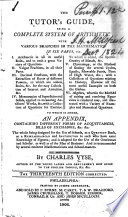 | Charles Vyse - 1806 - 342 σελίδες
...Term. RULE. Divide the Sum of all the Series by the Number of Terms, and from that Quotient subt.act Half the Product of the common Difference, multiplied by the Number of Terms less one, gives*the first Term. EXAMPLES. (13) A Person is to receive 27 51. at 10 different Payments, each... | |
 | Charles Hutton - 1812 - 620 σελίδες
...12. 3. The last term of any increasing arithmetical series, is equal to the first term increased by the product of the common difference multiplied by the number of terms less one ; but in a decreasing series, the last term is equal to the firsjt term lessened by the said product.... | |
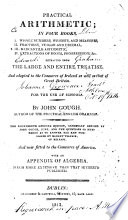 | John Gough - 1813 - 358 σελίδες
...which are the following. Proposition 1. In any increasing series, if the first term be added tothe product of the common difference multiplied by the number of terms less 1, the sum will be the last term: And in a decreasing series if the said product be subtracted from the first... | |
 | Charles Vyse - 1815 - 340 σελίδες
...to find the first term. RULE. Divide the sum of all the series by the number of terms, and from that quotient subtract half the product of the common difference multiplied by the number of terms less one, gives the first term. EXAMPLES. (13) A person is to receive 275/. at 10 different payments, each... | |
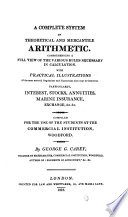 | George G. Carey - 1818 - 602 σελίδες
...TERMS, THE COMMON DIFFERERCE, AND THE SUM OF ALL THE TERMS BEING GIVEN, TO FIND THE FIRST OR LEAST TERM. RULE. Divide the sum of all the terms by the number...product of the common difference, multiplied by the nnmber of terms, mmvt 1 , the remainder is the first term. EXAMPLE. The number of terms is 11, their... | |
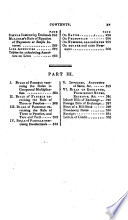 | Thomas Keith - 1822 - 354 σελίδες
...common txccss, or difference, and the sum of the terms, to find the least term. Rule. Divide the sum of the terms by the number of terms ; and, from the quotient, subtract half the product of the common excess, or difference, by the number of terms less 1, the remainder will be the least terln. Prop.... | |
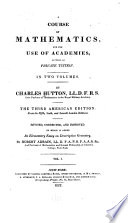 | Charles Hutton - 1822 - 616 σελίδες
...11=3+9=5+7=12. 2. The last term of any increasing arithmetical series, is «qual io the first term increased by the product of the common difference multiplied by the number of terms less one ; but in a decreasing series, the last term is equal to the first term lessened by the said product.... | |
 | John D. Williams - 1840 - 634 σελίδες
...common excess, or difference, and the sum of the terms, to find the least term. RULE. Divide the sum of the terms by the number of terms ; and, from the quotient subtract half the product of the common excess, or difference, by the number of terms less 1 ; the remander will be the least term. Case 6.... | |
| |